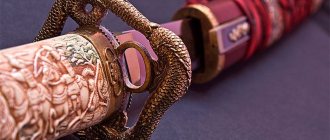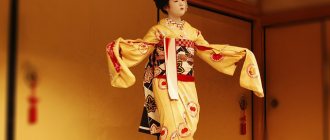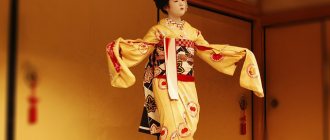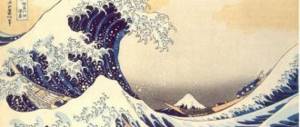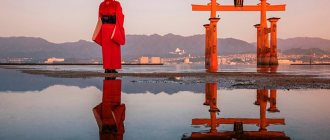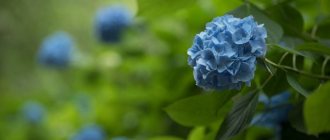If you are not a samurai, nor are you a Buddhist monk, you did not study at a geisha school, and you only occasionally watched notes on TV and read about Japan itself on TV, this will not prevent you from creating your own beautiful ikebana. How? There would be a desire!
All of Japan in one composition. Simple (but only at first glance), sophisticated, multifaceted, not completely understandable
What it is
It is not surprising that the word “ikebana” goes back to the Japanese language, because it is a real art form that all of Japan is proud of. It consists of two roots:
- “ike” or “ikeru” – translated as “alive”;
- “Bana” or “khana” means “flowers”.
“Live Flowers” is a great name for these works of art because even cut flowers, artfully arranged into a bouquet, look lifelike. Often the name is also translated as “the second life of flowers,” implying that they are born in a new reality and carry a deeper meaning.
Ikebana is the art
of arranging flower arrangements and placing them successfully in space. It brings harmony to the home and completes the interior with natural accents.
To compose compositions, different materials can be used, most of them natural:
- plants;
- branches;
- flowers;
- fruit;
- leaves
- dry grass;
- Earth;
- sand;
- stones;
- glass;
- water;
- plastic is used more and more nowadays.
The compositions are placed in special vases, the variety of which is amazing and expands along with the evolution of art. In the history of ikebana there were many innovators who offered more and more new ideas for composing Japanese bouquets.
True masters have been mastering the art for many years. They learn to see beauty in every bud or branch and reflect it in a bouquet so that everyone can see it. Ikebana may consist of just one flower or leaf - but at the same time it will reflect the entire depth of life that it symbolizes.
Simple and elegant - these are the main characteristics of ikebana, created by a brilliant master.
Ikebana from dried flowers
There is an option to make ikebana from dried flowers, but you should not undertake this if you are not experienced in this matter, it is better if a florist does it. If you didn’t have time to pick flowers in the fall, then all is not lost because you can look at the seeds, which may be located in areas where there is no snow yet or plants in your apartment (if you have them), and you can also purchase artificial dried flowers. Dried flowers have many benefits! Some you can hang on the wall, others you can put in a vase without water, and others you can make into a wreath. You can also add all sorts of decorations to your ikebana.
History of origin
One legend tells about the emergence of the art of ikebana. One day, a strong hurricane with a thunderstorm swept through Japan, which destroyed everything in its path and destroyed the trees and bushes around. Then the Buddhist monks, laying a branch of a broken tree to the Buddha statue, turned to the Teacher in the hope that he would help restore the destroyed vegetation.
Surprisingly, after a little time, the fragrance of flowers again spread across the devastated territories, the bushes opened their buds, and the gardens bloomed, once again giving beauty to those around them. So Buddhist monks began to often build ikebana trees so that the gardens would never stop blooming.
Historians have widely differing opinions about when the first ikebana appeared. It is generally accepted that it came to Japanese lands from China, and, like the chrysanthemum - a symbol of imperial power - spread throughout the country, more precisely, along its Buddhist side. Initially, the compositions were made by monks, they were used to decorate temples and given to Buddha as an offering.
Later, in the 9th-10th centuries, the compositions went beyond the temples and spread into the homes of ordinary Japanese. Taking on more natural, graceful forms, they became an integral part of the interior and brought with them harmony.
Ikebana at a tea ceremony in ancient Japan
By the 12th-14th centuries, the art was adopted by ascetic samurai, and therefore made it simpler and more modest. Around the same time, the school of Zen Buddhism developed in Japan, so bouquets, symbolizing the path to truth, completely lost any chic, although they remained just as beautiful and symbolic.
Everything changed in the 17th-19th centuries, when ordinary joys and admiration for life itself became the main values in life. The former symbolism in the composition became less important than the feeling of harmony that the ikebana trees of that time gave.
Interestingly, any geisha in Japan must master the art of creating ikebana.
The idea behind the flower arrangement
It is not for nothing that Ikebana is one of the most famous and beloved classical art forms in Japan. People don't just make it their hobby. There is a much deeper idea behind this. Basically it is about creating inner peace and promoting self-realization. You learn to look at nature differently by creating a small piece of nature yourself. The simplicity of the process means that it requires years of discipline, understanding and practice.
Views: 5,778
Share link:
- Tweet
- Share posts on Tumblr
- Telegram
- More
- by email
- Seal
Features of art
Residents of the Land of the Rising Sun equate the creation of flower arrangements with high art. Just as, for example, a musician must have perfect pitch, the creator of ikebana must have impeccable taste and excellent eyesight.
Lines, color and shape play an important role in composing a composition. For example, horizontal lines convey indifference and detachment, while diagonal lines convey inspiration and joy.
“Warm” colors - for example, yellow, orange - convey a positive attitude, friendly feelings, but blue, blue - restraint, coldness. Green is considered a neutral color and is used to “link” other colors together. Often masters play on the contrast of colors, which allows them to influence people’s mood and emotions.
As we already know, ikebana is closely related to Buddhist philosophy, as well as the Shinto religion, and therefore it is based on symbolism - the confrontation between evil and good forces, earthly and heavenly. In this regard, the compositions were symbolically made from two branches.
Later, around the 7th century, a third was added to the two elements, which personified man. Thus, the conventional scheme for constructing ikebana became a triangle - a harmonious shape in the Japanese sense.
Today, attention is paid not only to the composition itself, but also to what place it occupies in the interior, what shape or color scheme it has, and what light falls on it. Such increased attention is justified - after all, some Japanese consider the process of contemplating ikebana a real meditative practice.
Colors and combinations when creating ikebana
Ikebanas look better with color combinations rather than just plain ones, but if you like certain colors then there is no limit to you...
White flowers and green leaves with stems will be beautifully combined; it will also be beautiful to make an ikebana in the form of a sakura tree branch - a brown branch and soft pink flowers sticking out in different directions. You can make a tree - a lot of green on tall stems and some light in different colors. You can make a bouquet of different soft purple flowers.
Schools
In total, there are more than one hundred ikebana schools, but throughout their existence, three of them are the most famous and influential:
- Ikenobo
Of all the other schools formed, it was the first. It got its name thanks to its founder, Ikenobo Senkei, who lived in a house by a lake in Kyoto in the 15th century. He was a monk and composed temple compositions that were quite modest in appearance, but reached far from modest sizes - up to two meters. The Ikenobo school mainly used rikka and shoka styles.
- Ohara
The school appeared in the last years of the 19th century and gave art a new style - Moribana. Its peculiarity lies in the fact that the basis of the compositions are low vases filled with water with a flat bottom.
Moribana
- Sogetsu
The school's name translates to "grass and moon."
Sogetsu was founded in the third decade of the last century. The school was born thanks to the outstanding artist Sofu Teshigahara.
He was the first to use artificial materials in Japanese bouquets, along with natural materials: metal, fabric, plastic products. From that moment on, ikebana left the confines of ordinary houses and premises, now being exhibited in park areas, on sidewalks and even in the subway.
Ikebana in Kyoto metro
Materials
Traditional materials are plant elements: blossoming flowers, buds, branches with swelling buds, leaves, sprigs of pine needles, fruits and dry grass.
Auxiliary elements are clay, bronze, ceramic vessels, auxiliary structures made of glass, metal and plastic, stones, minerals, sand and water.
For flower mass, the most common choices are: orchids, gerberas, hyacinths, asters, peonies, roses, begonias and crocuses.
The composition is created by an inner feeling - the ability to see and convey the beauty and harmony of the plant world.
Styles
Specific schools have always preferred certain styles of creation, although now there are no strict boundaries, and masters can create, inspired by several styles at once.
- Rikka
Associated with the emergence of the Ikenobo school - it was used in temple decoration. Due to their impressive size, tree trunks were used: wide stems of bamboo, solid pine. Several craftsmen worked simultaneously on the production of one composition.
Its name translates as “standing flowers.” Moreover, these flowers symbolize the power of nature: rivers, rocks, mountains, forests, waterfalls, fields - the creators amazingly managed to recreate landscapes. However, the manufacturing process was very labor-intensive, so this style was gradually replaced by more compact compositions.
- Shoka
Essentially, it's the same old rikka style, but in miniature. If the first one was loved by monks, emperors, aristocrats and other representatives of “blue blood”, then the shoka style could be found even in the homes of ordinary people.
It was formed with the advent of the 18th century and rested on three pillars: the embodiment of the whole world, the Earth and humanity.
- Nageire or heika
The peculiarity of this style is that the compositions are made in tall vases. The stems and flowers are held in place by a narrow neck, and sometimes by special supports. Nageire not only conveys the splendor of nature, it emphasizes the grace of the plants themselves.
- Moribana
We have already written about this style a little higher. It began to spread at the turn of the 19th and 20th centuries. The composition is based on a flat, low dish, to the bottom of which water is often added.
If the Moribana is quite voluminous, it is also secured with special holders.
The Moribana style began to use vegetation brought from Western countries.
- Dzyuika
The most modern style to date, which smacks of surrealism. A variety of materials are used - from natural gifts to synthetic materials. Vases, and the composition itself, can take on very bold shapes.
How to make Ikibana with your own hands
To make the ikebana look like a single whole, work begins from the center of the composition. It is installed perpendicular to the base. The other two lines are placed asymmetrically and at an angle, depending on the idea of the work. The main line is represented by a flower, a branch of a deciduous or coniferous plant, or decorative elements. Curved branches make the composition dynamic.
The theme of the composition is chosen with an eye to the current time of year. Flowers, wood elements and decor reflect the state of nature.
A flower vase should not attract attention with bright colors, texture or decor. Try to find a discreet piece in earthy tones.
Autumn bouquet
The bright colors of autumn foliage, rich colors of asters, dahlias, chrysanthemums, carnations will set the mood of the autumn composition.
Additional elements: pumpkin baskets, driftwood, acorns, chestnuts, nuts, citrus fruit peels. A glycerin solution will help preserve the appearance of yellow and red leaves.
Fix the selected decor using floral sponges, polystyrene foam or plaster. Sand, pebbles, and minerals poured on top will help disguise the fastening element.
Winter's Tale
Cold season floristry is distinguished by rich, bright colors. A winter piece brings a festive atmosphere into the home. Basic winter decor: pine needles, cones, nuts, citrus peels, viburnum bunches, rowan berries, dried fruits, garlands, beads. Important colors: dark green, scarlet, rich cold blue, silver, gold. The basis is wicker baskets or wire frames.
Spring Summer
Spring bouquets are distinguished by delicate buds, young branches with swollen buds. Delicate fresh shades predominate: pastel colors, light brown, mint, white, bright yellow. Summer herbs and flowers are placed in vases with water using kenzon.
We found several thematic videos to show the work of masters and students. On Internet resources there are calls to replace fresh flowers and plants with paper products made with your own hands. This choice is justified by the fragility of living plants and the disproportion of the effort expended. Wanting to warn beginners, we note that artificial flowers will not bring even a small amount of aesthetic pleasure. Even 100 years ago, decorations made from artificial flowers were considered a sign of extreme poverty or philistinism.
There are over 3,000 schools in Japan, with slight differences in design. The basis of the compositions is the principle of three geometric lines. Each school has its own symbols.
Modernity
In the last century, Westerners also showed an undisguised interest in the art of ikebana. They tried to recreate masterpieces, introduce something new, and use their own materials. However, this type of art in Japan and in the West differs in the main thing - its approach.
If Europeans treat it as a hobby, some kind of entertainment and a way to get in touch with the mysterious culture of the East, then the Japanese themselves approach creation with all seriousness. For them, this is a special ritual that requires strength, time and, of course, a piece of the soul.
Today in the Land of the Rising Sun there are more than three hundred large schools - which is about 15 million people who are sincerely in love with the art of ikebana.
Influence of Buddhism
The origins of the art of Ikebana can be traced back to the 6th century, the beginning of Buddhism in Japan. Part of the worship involved laying flowers on the altar in honor of the Buddha. In India, the birthplace of Buddhism, flowers were not laid regularly, and sometimes only petals were scattered around. However, by the 10th century, the Japanese were placing their offerings in containers. Laying on the altar was the responsibility of the temple priests alone.



